Your cart is currently empty!
Ceci n’est pas Chinese Snow White (我不是迪斯尼版杨贵妃)
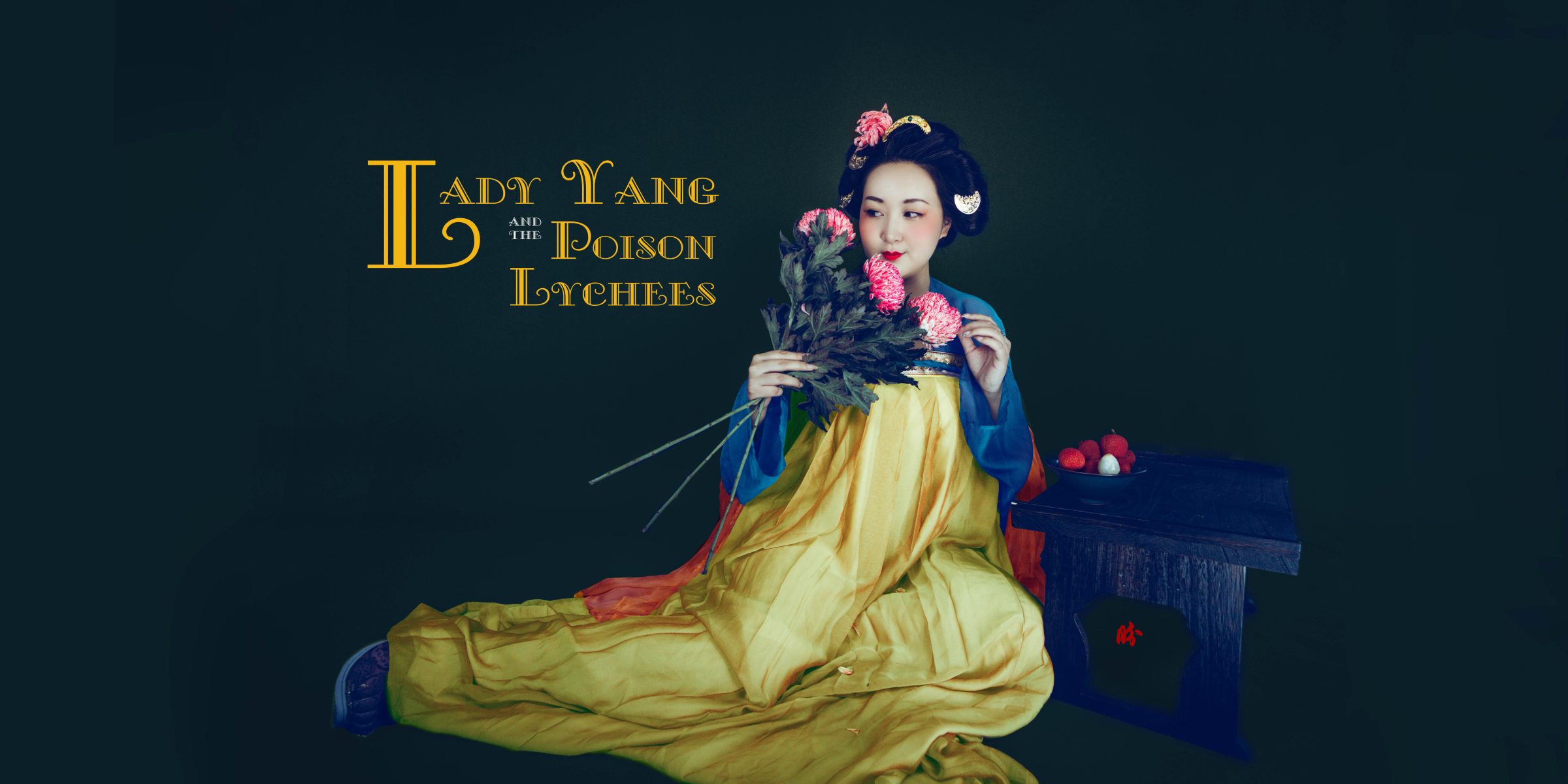
This set is probably the easiest to identify of the lot in both the Western and the Chinese cultures. Congratulations to those who got it when I released the teaser shot!
While everyone including the Chinese population is probably familiar with the story of Snow White, it’s unlikely that the non-Chinese people are familiar with the story of Lady Yang, so I will start with a summary of her story.
Background Story
Lady Yang lived about 1,300 years ago, in Tang dynasty China which was one of the most prosperous and culturally open periods in Chinese history. The aristocrats during that period were of Han Chinese and central Asian mixed ancestries, so they were extremely welcoming and open to foreign cultures and influences. Persian and Indian music, dance, make-up, incense/scent, food were the most fashionable thing in the capital of China (Chang’an, modern day Xi’an) back then. Chang’an was also the largest city in the world then, with a population of about 1 million (the ancient NYC of sorts).

Round/plus-size figure was highly sought after during that period and Lady Yang became an icon for plus-size beauty. She caught the attention of her father-in-law who was the emperor and she was later “transferred” to be his royal consort. The emperor (read: father-in-law-turned-husband) doted on her so much that she was able to infiltrate the imperial court with her family members. Her fate was very much like that of Marie Antoinette (ideas for yet another series maybe!).
There’s a short English animation on youtube that does a good job at telling the story–you can watch it HERE.
So it is against this backdrop that my photostory starts–a story of overconsumption and its grave implications.
LADY YANG AND THE FLOWERS (羞花)
Similar to Snow White, Lady Yang was an orphan having lost her father at a young age. She was brought up by her godfather and married one of the princes. The emperor noticed her after his favourite concubine’s death (who’s also her direct mother-in-law gah!), and sent her to a monastery for a few years before bringing her back as his own concubine.
She was said to be so beautiful that the flowers paled in comparison and would shy away in shame in her presence. There is a popular phrase that is commonly used to describe beautiful women based on the 4 legendary beauties which loosely translates to:
沉鱼 (fish died) 落雁 (goose died),闭月(moon died/shy away) 羞花 (flower died/shy away)
Well, the actual saying is a lot more poetic but it definitely got lost in MY translation. Basically, so beautiful that everything pales in comparison. And in the case of Lady Yang, it was the flowers.
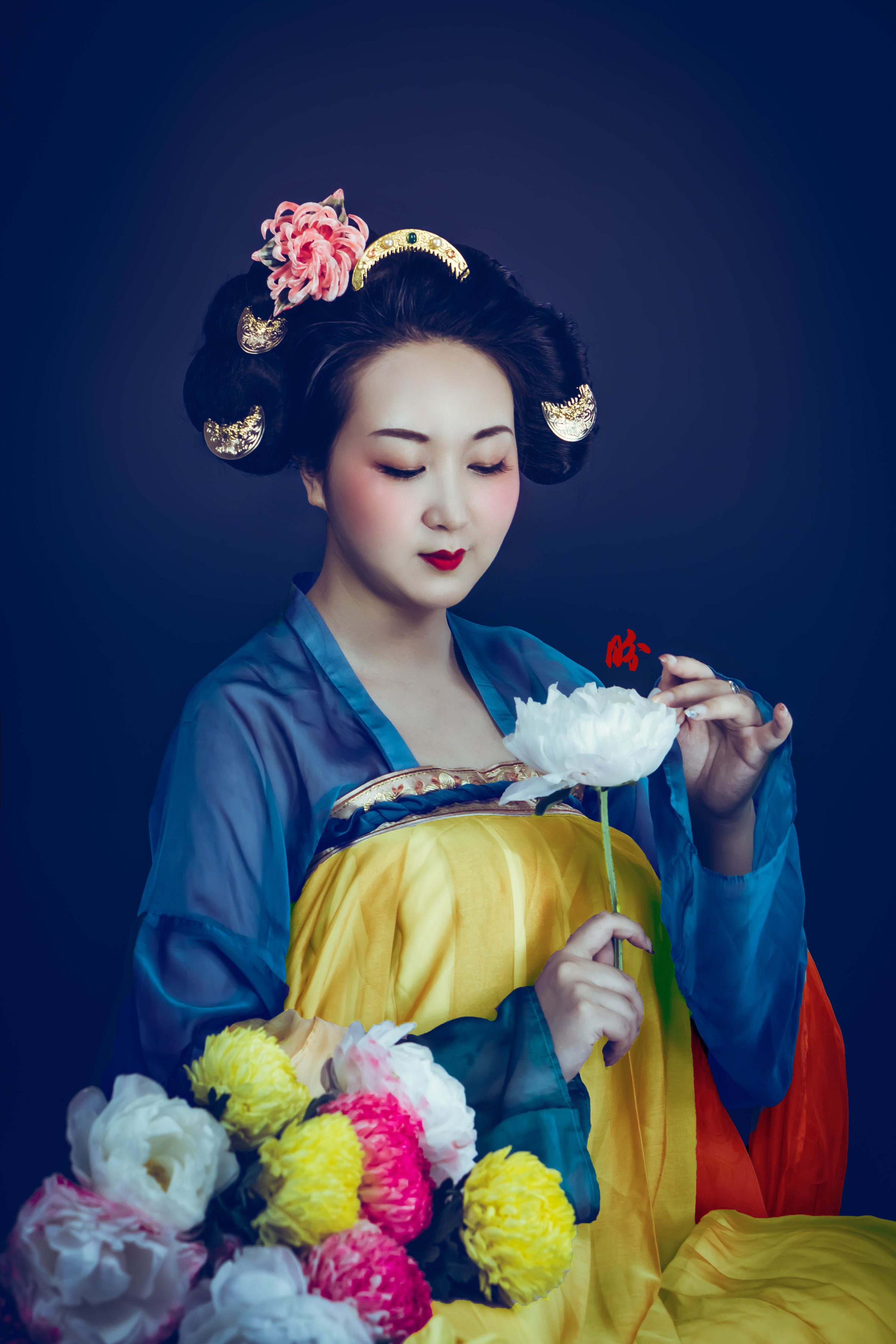
Of course, these were all poetic romanticisation of their beauty, and not to be taken literally. In some sources (including that animation), it was said that she actually touched a mimosa (?!?!) and the flower closed up as a result. Firstly, the flowers of mimosa do not close up nor shy away when touched (I know cos I used to play with them, not because I was trying to be Lady Yang of course :P), it’s only the leaves which do. Secondly, I’m not sure if there was mimosa in China then (it’s native to Central/South America). Even if there was, it’s too small a flower for her to want to pick or touch, probably regarded as a weed anyway, since Tang dynasty is all about big, flamboyant, excessive tastes such as the extremely multi-petaled peony. So, definitely fake news.
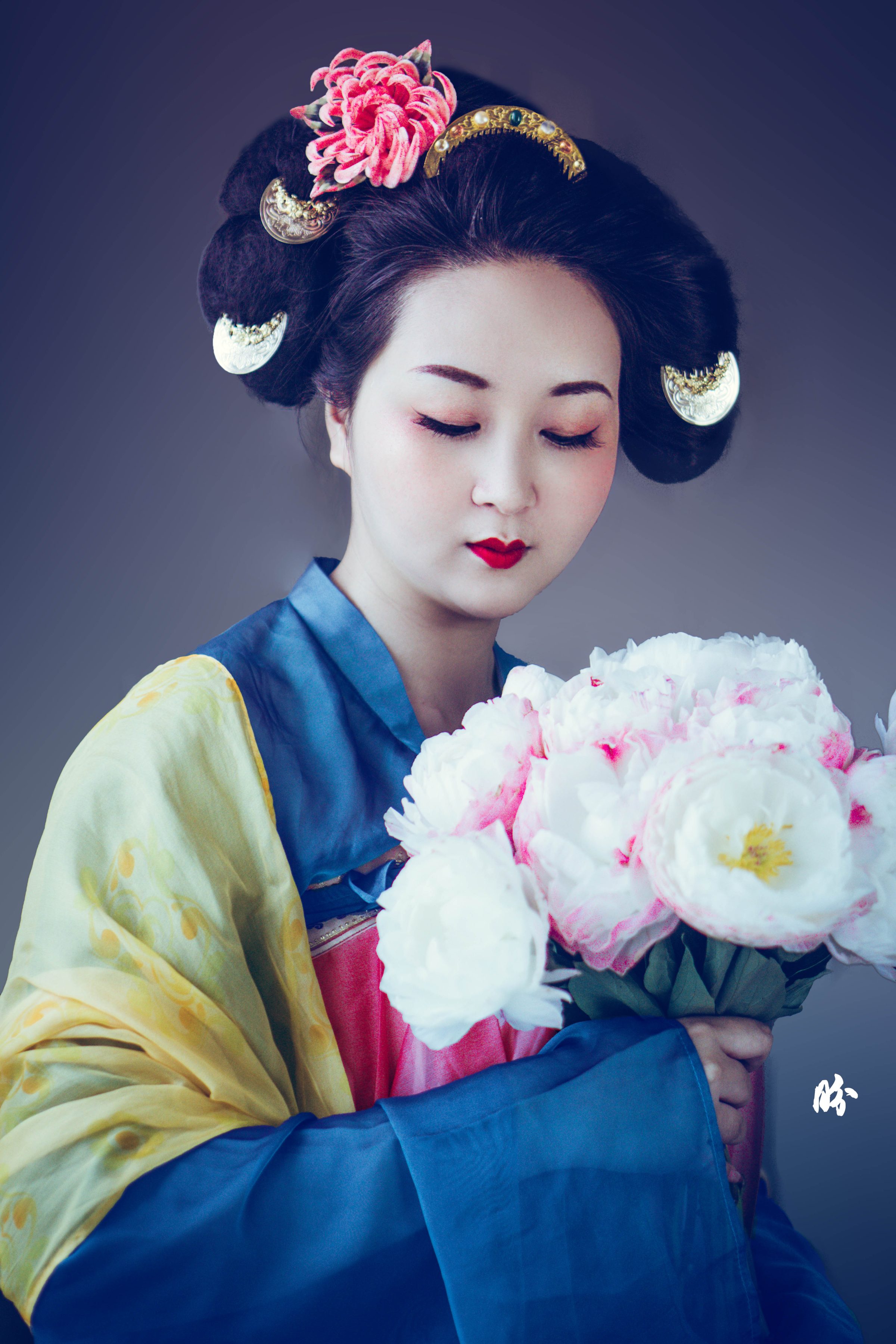
DECADENCE AND CORRUPTION
Like Snow White, it was not her fault that she was born to be so beautiful and alluring. But what her beauty brought her, and how she utilised her beauty to corrupt power was the cause of Lady Yang’s downfall. Before you know it, like the seven dwarves surrounded and served Snow White, Lady Yang too brought her own entourage to the game. Her cousins, uncle, and sisters were given high official rank and titles, and there was plenty of cronyism going on.
But objectively speaking, Lady Yang was doing a good job entertaining and humouring the emperor! They enjoyed an extremely decadent lifestyle, with all the richness of the nation, and understandably she was rewarded handsomely for doing her job well by the emperor!
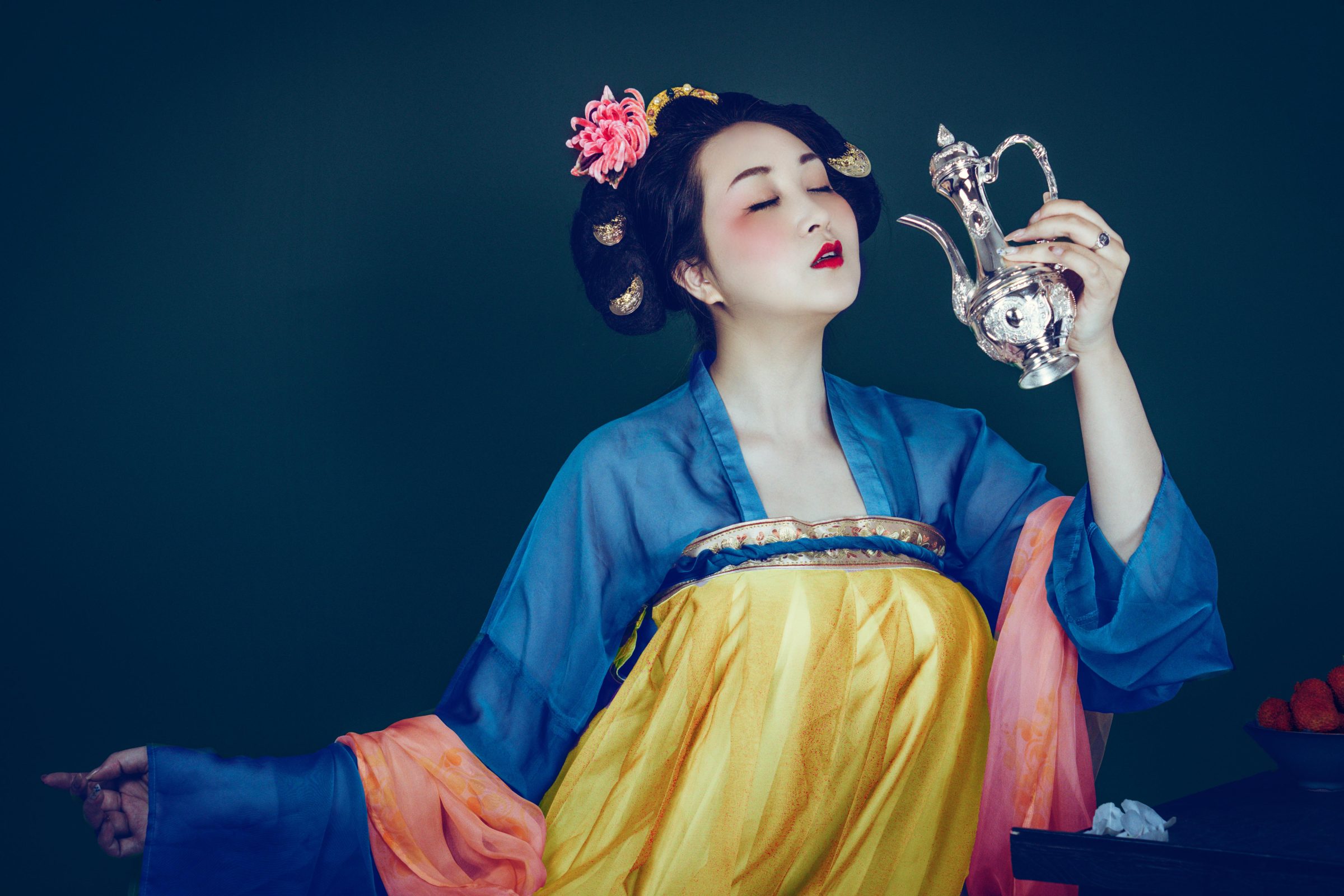
PRESENTING: POISON LYCHEE AS THE POISONED APPLE
Perhaps, the evil stepmother was none other than the fed-up officials who were not related to the Yang family, and who saw how Lady Yang/Snow White was trying to consolidate power within the dwarves (in Lady Yang’s case, 6 of them) and wanted her dead. Or the evil stepmother was the rebel army general An Lushan who was agitated by one of the arrogant dwarves and started fighting back, causing the emperor to flee the capital with his trusted men and women. Whatever the reason, Lady Yang and her dwarves family members were blamed for the rebellion, and for the emperor’s helpless predicament. The emperor was given an ultimatum by the general of the imperial troops–your throne or your woman, and that was the end of Lady Yang and her gloriously corrupted family. When she died, she was only 38 years old.
Everyone remembers the characters in the story, but this would not have been possible without important plot device–the poison fruit. In the case of Lady Yang, it would definitely have to be the Lychee.
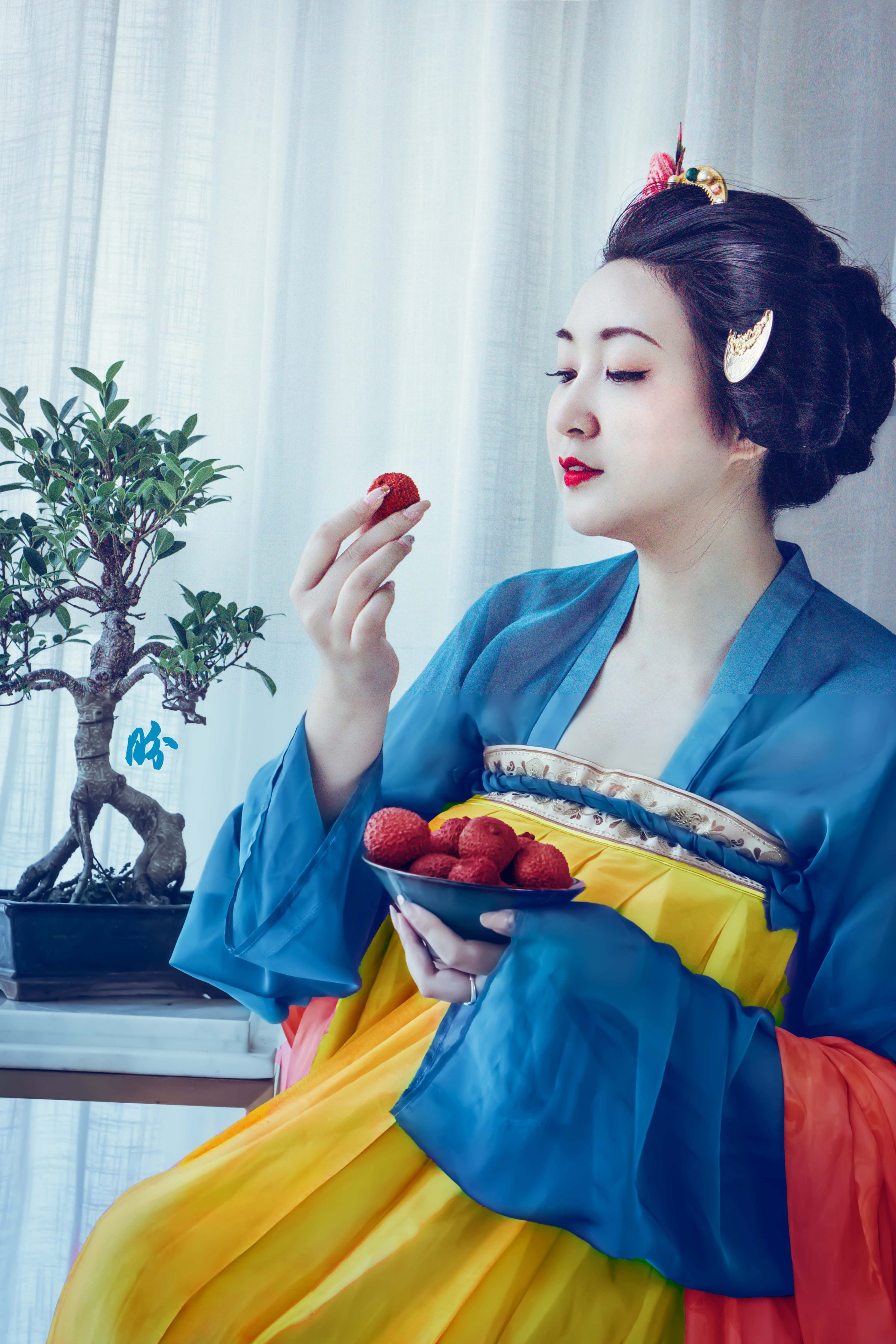
THE FALL OF LYCHEE
Lychees were not native to the Tang Capital Chang’an (modern day Xi’an), and the nearest source of it would have been somewhere beyond the mountains and valleys in Sichuan which google map tells me is about 43km away. In those days, the distance is likely to be longer as roads had to go around the mountains and the transport was mainly by foot or horse.
Based on records, it seems that it would take about 3-7 days to travel from one place to another on horse, and lychee was said to be delivered fresh to her, so the emperor was said to have deployed post-horses which were meant to deliver important state news related to the safety and stability of the nation at large, to deliver her lychees.
There was famous poem Passing by the Huaqing Palace 过华清宫绝句 (English translations HERE) that was written about her love for lychees by a poet of her time. It was a poem that stealthily lamented on how much resources were required and how much (unnecessary) abuse/misuse of power there was for the purpose of getting her lychee supply.
So, like the poison apple of Snow White, the Lychee was full of political and social implications and thus poisonous in a metaphorical way.

POISONED OR POISON APPLE LYCHEE
The unripe lychee can cause death in children. An interesting coincidence that I just learnt of during the course of my research. Which means that it is grammatically correct to call it Poison Lychee instead of, poisoned (something I have been mulling over when it comes to that apple).
From a personal health point of view, I am wondering if her love for lychee has anything to do with her health. Apparently, lychee (especially unripe one) has something called hypoglycin which could block our body from producing sugar and therefore good for diabetic patients. Perhaps she is diabetic (since Type II diabetic patients are generally rounder) and it was something that was useful for her condition!
However, it’s always about eating in moderation. Judging from the way that poets/stories write about it, either it’s an exaggeration, or she had an unhealthy obsession with lychee.
According to Traditional Chinese medicine, lychee is considered extremely heaty, so consuming too much would cause an imbalance in your body. In the process of this shoot, I only ate 3 lychees (although we bought 3 bags full, BAAAA~~~), because I know otherwise I would have an outbreak and other side effects.
I also came across a recent facebook notice by Hong Kong’s Centre for Food Safety, it is not advisable for adults to consume more than 10 lychees at one go, or children to consume more than 3. And there were also a few incidents of children dying from consuming lychee in India last year which was due to children with malnutrition eating unripe lychee on an empty stomach. Furthermore, overconsumption of lychee would also cause you to have too much sugar intake! GAH!
Perhaps, even if the rebel army didn’t want her dead, it would also be death by lychee overconsumption.
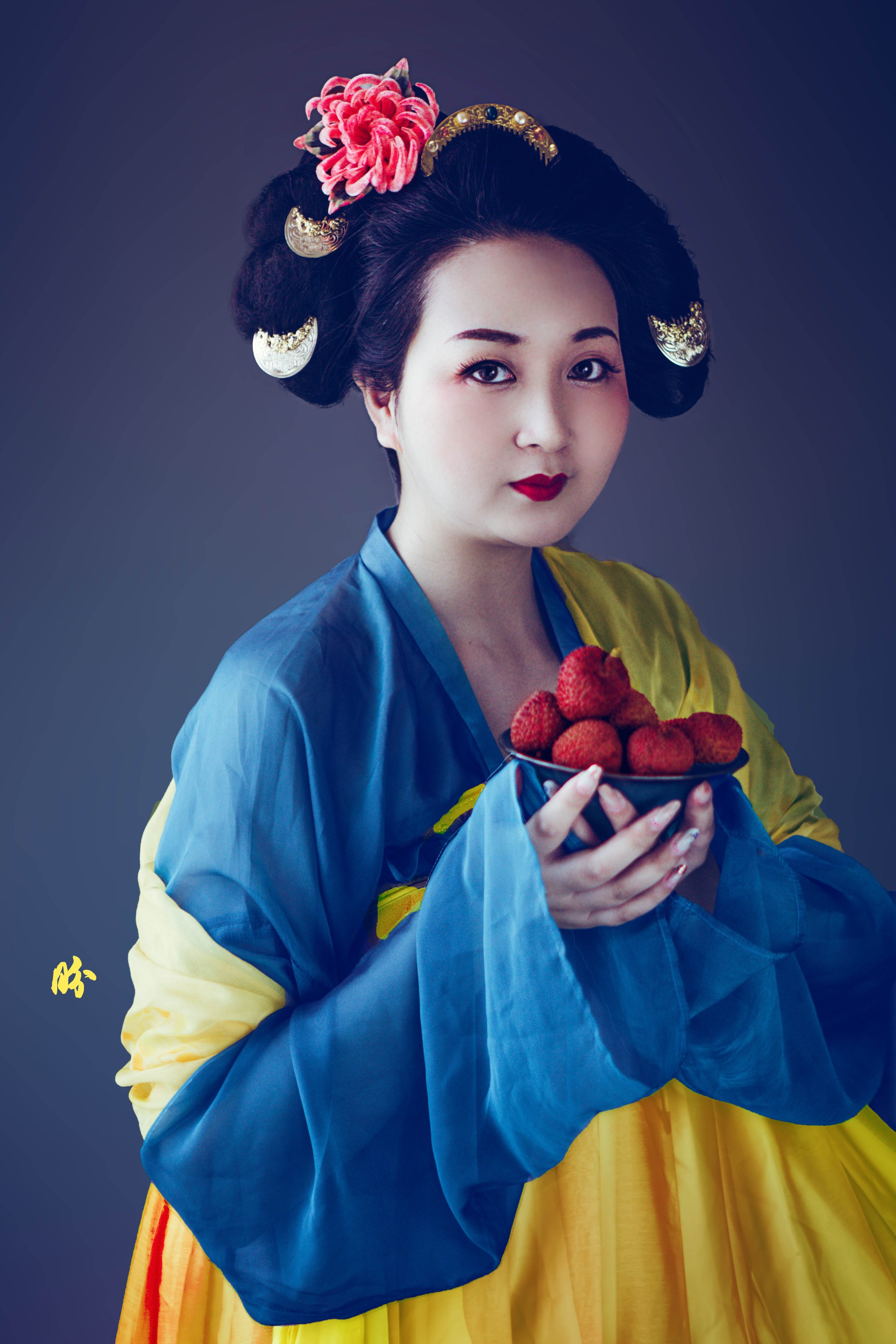
APPLE LYCHEE OF JAPANESE’S EYE
The Japanese culture has high regard for Tang dynasty Chinese culture (Tang and Song dynasty China actually), and they adore the story of Lady Yang so much that some believe that she didn’t die and instead escaped to Japan. In Japan, she was known as Yokihi. One version believed that she arrived at the Yamaguchi prefecture and apparently to date there are still two temples in Kyoto related to her. Popular Japanese actress Yamaguchi Momoe (山口百惠) also claimed that she was a descendant of Lady Yang which is kind of hard to believe since Lady Yang never bore any child while she’s married to the emperor (he was having kids with other concubines at the same time). From a medical point of view, it is also likely that obesity could cause a certain level of infertility, but don’t quote me on that–when in doubt, please consult your nearest GP!
The Story of Lady Yang not only inspired Bai Juyi’s famous poet Ode of Ever-Hatred (长恨歌), but also the great Japanese classic Tale of Genji.
And did you know, she’s also of mixed ancestry–Central Asian and Chinese! If you’ve read my previous articles on Tang dynasty, you would also understand why I chose Song Ge to be my model as Lady Yang.
And because Pop Art is always fun, here’s one to end this piece!
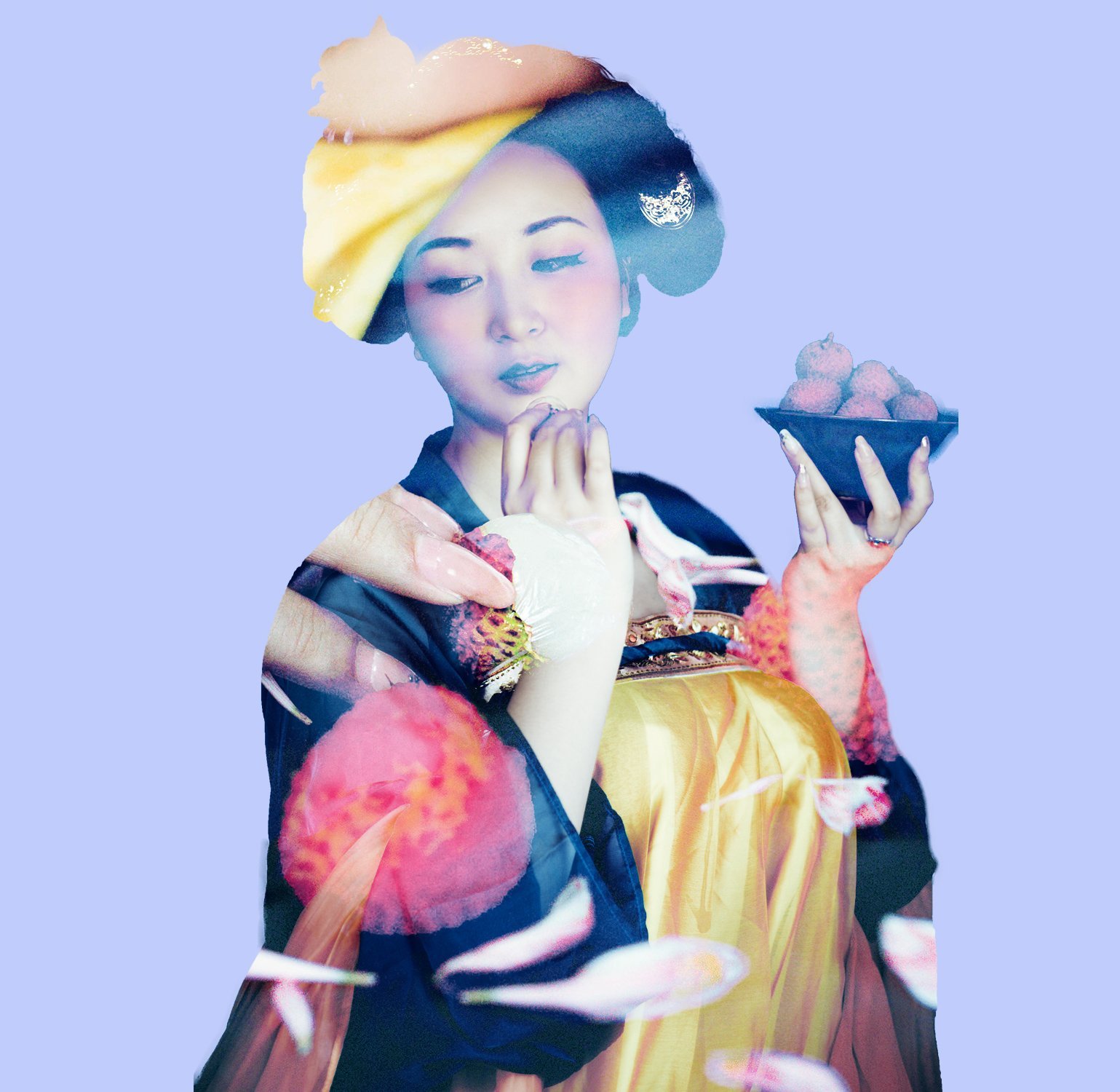
If you wish to know more the daring eyebrow trends of Tang dynasty (and a little bit more about Song Ge and Tang dynasty), you can click HERE.
If you wish to know more about plus-size beauty and cross-dressing fashion during Tang dynasty, you can click HERE.

Leave a Reply